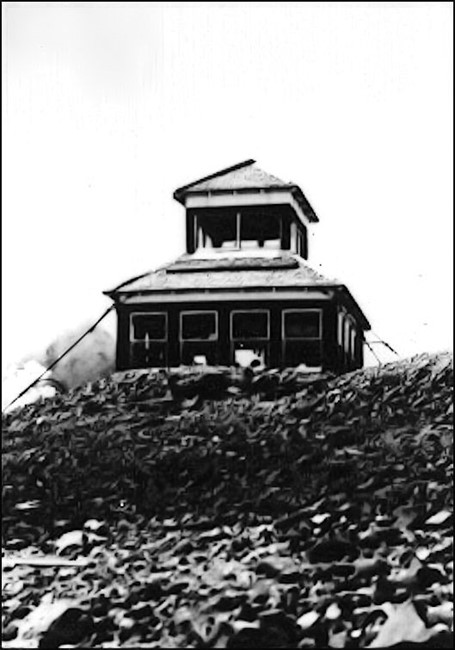Mount Saint Helens Lookout Site
US 1338, WA 238

Lookout Details
| Registry Numbers | US 1338, WA 238 (view other lookout sites in United States, Washington) |
| Date Registered | July 17, 2012 |
| Nominated by | Ray Kresek |
| Location |
Gifford Pinchot National Forest Skamania County, Washington |
| Coordinates |
N 46° 12.009' W 122° 11.362' (view using Google Maps) N 46° 12' 01" W 122° 11' 22" N 46.200150° W 122.189370° |
| Elevation | 9,677 ft (2,950 m) |
| Administered by | U.S. Forest Service |
Description
Construction began on the cupola cabin in 1918, with work continuing until 1921 due to the unpredictable weather on the summit. The lookout was abandoned about 1929. Nothing was left of the building by 1980 except the foundation. All remains were permanently removed by the volcanic eruption in May 1980.
Kent Mays provided this information in March 2014 about his family's connection to the Mount Saint Helens lookout:
In 1911 my grandfather, George Mays moved his family to Yale, Washington and established a home. The family traveled by train from Portland to Woodland, WA and then took 2 days via buckboard for the trip to Yale. George worked occasionally for the Forest Service building roads and other construction projects. One of the projects he worked on was construction of a fire lookout on the summit of Mt. St. Helens.
However, it was soon learned that the summits of these tall peaks were often above the clouds, and the forests surrounding these mountains were obscured from view. Those high locations were not useful for fire detection.
In 1927 my father, Larry Mays, worked for the Forest Service on the Columbia National Forest on the Spirit Lake Ranger District. During one of his summer assignments he climbed the mountain and helped remove salvageable equipment from the lookout.
On the day they removed the Osborne Fire finder, one of the crewmembers was carrying the movable ring on his back pack. As they descended the mountain the ring came loose and began its own journey rolling down the mountainside. Above the “Dogs Head,” (a lava formation so named because it resembled the head of a dog), (this geologic feature was obliterated in the 1980 eruption of Mt. St. Helens), the ring leaped into space and crashed into the rocks and the glacier several hundred feet below. No one climbed down to recover the pieces.
In the summer of 1950. Keith Argow (FFLA Chairman) and I were campers at the Portland YMCA Camp at Spirit Lake. We climbed Mt. St. Helens. We had our lunch on the remnants of the wooden lookout house structure on the summit of the mountain.
Kent Mays provided this information in March 2014 about his family's connection to the Mount Saint Helens lookout:
In 1911 my grandfather, George Mays moved his family to Yale, Washington and established a home. The family traveled by train from Portland to Woodland, WA and then took 2 days via buckboard for the trip to Yale. George worked occasionally for the Forest Service building roads and other construction projects. One of the projects he worked on was construction of a fire lookout on the summit of Mt. St. Helens.
However, it was soon learned that the summits of these tall peaks were often above the clouds, and the forests surrounding these mountains were obscured from view. Those high locations were not useful for fire detection.
In 1927 my father, Larry Mays, worked for the Forest Service on the Columbia National Forest on the Spirit Lake Ranger District. During one of his summer assignments he climbed the mountain and helped remove salvageable equipment from the lookout.
On the day they removed the Osborne Fire finder, one of the crewmembers was carrying the movable ring on his back pack. As they descended the mountain the ring came loose and began its own journey rolling down the mountainside. Above the “Dogs Head,” (a lava formation so named because it resembled the head of a dog), (this geologic feature was obliterated in the 1980 eruption of Mt. St. Helens), the ring leaped into space and crashed into the rocks and the glacier several hundred feet below. No one climbed down to recover the pieces.
In the summer of 1950. Keith Argow (FFLA Chairman) and I were campers at the Portland YMCA Camp at Spirit Lake. We climbed Mt. St. Helens. We had our lunch on the remnants of the wooden lookout house structure on the summit of the mountain.
Map
Change Basemap